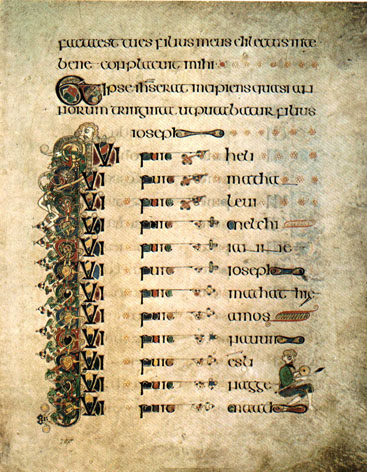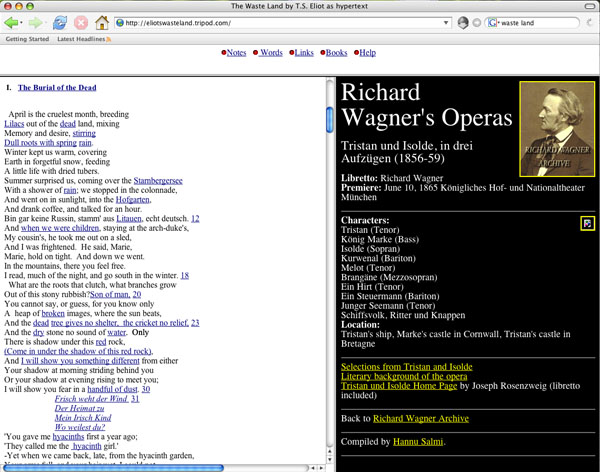 Illuminations have been a part of book culture since the early 4th century and serve to decorate, enhance, or articulate a text. This page is from the Book of Kells and describes in words and images the genealogy of Christ. |

Today similar, more accessible potentials exist for
illuminating texts. This example, from a hypertext version of T. S. Eliot's "The Waste Land," utilizes
a separate window to gloss the text and provide supplemental information
based on the links the reader selects. This kind of project, like the
genealogy, guides the reader by revealing aspects of the text previously
obscured or unknown.
|
| Digital texts update and improve print production. Instead of threatening the status of the printed text, digital media enhances it. Digital media has the ability to turn a two-dimensional work into a multidimensional one. Readers can easily move back and forth between the primary source and the historical, philosophical, and aesthetic backgrounds that inform it. Digital "e-lumination," therefore, provides a rich textual layering that students would normally overlook because of difficulty in locating all the materials. This type of work encourages students to use the resources on the Internet to gain a better understanding of the background of the text, the allusions therein, and the work's later relevance and influence. "E-lumination" requires students to make choices about the most important aspects of the texts to explore, along with the best way to do so. Digital media allows students to enhance their readings and think critically through the examination of others' illuminated texts and the creation of their own. |


